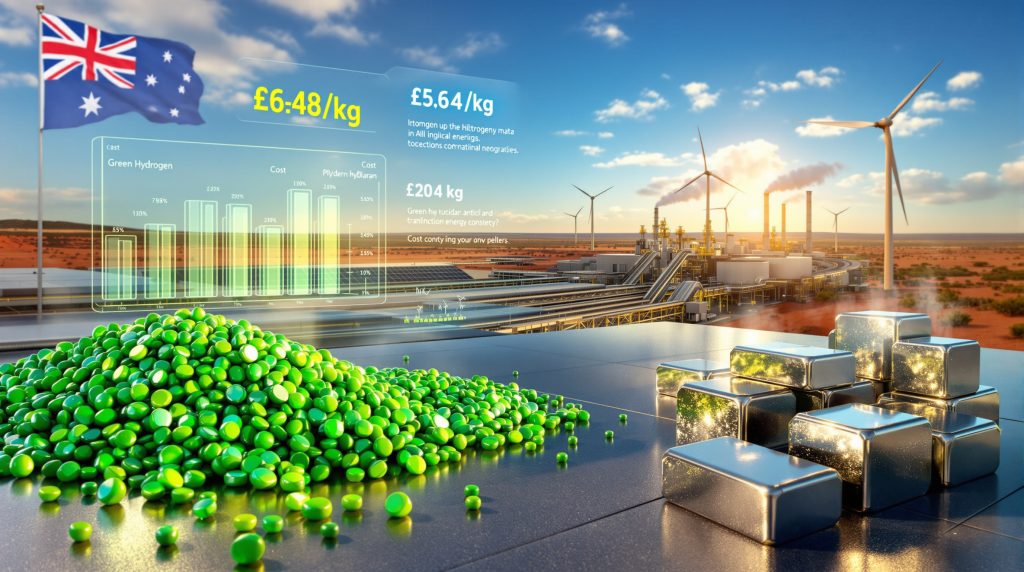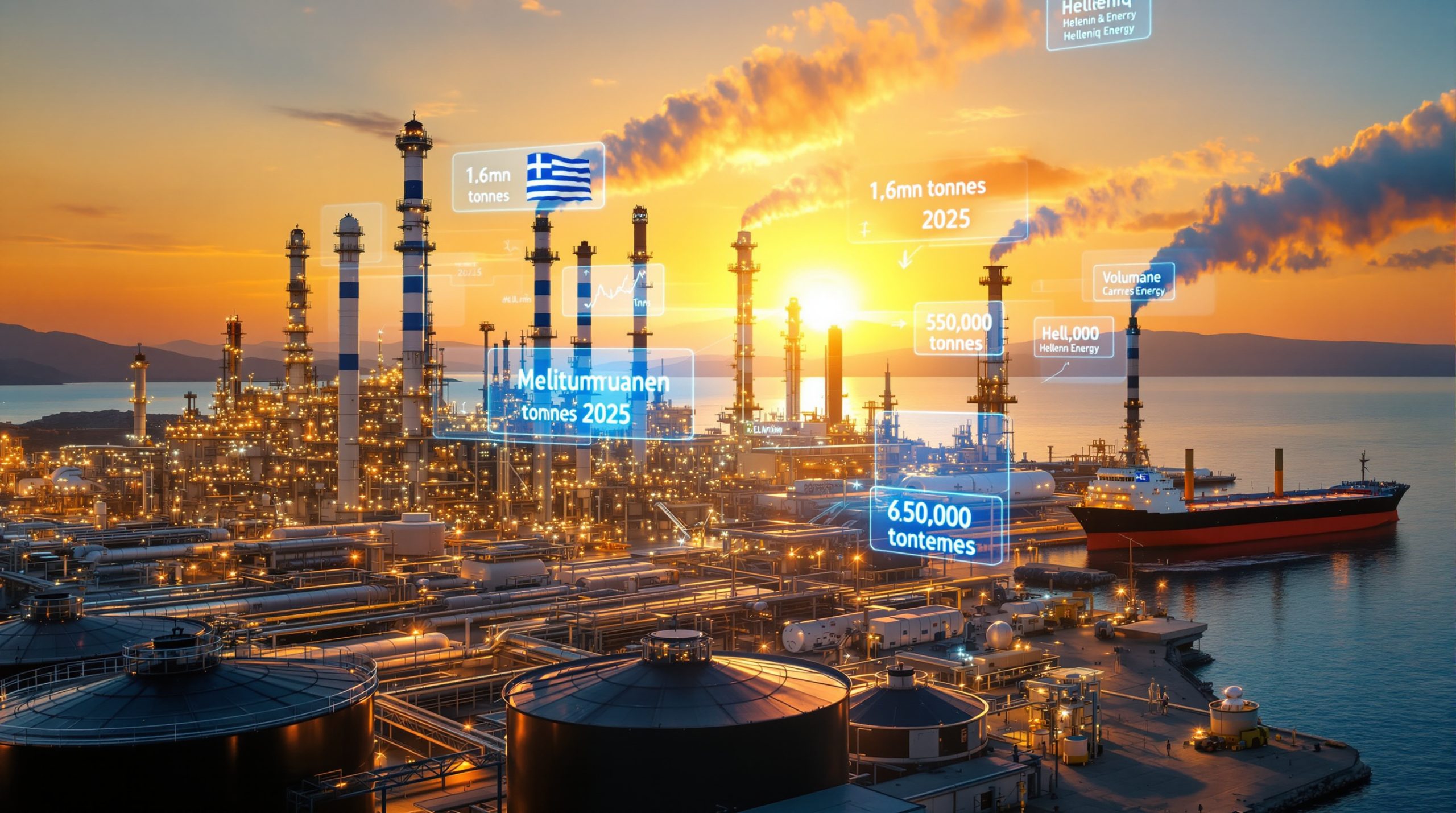Global Energy Markets Navigate Unprecedented Decarbonisation Crossroads
The global energy transition has entered a phase of strategic recalibration, where initial ambitions for large-scale hydrogen production are being tempered by economic realities and shifting geopolitical priorities. The Fortescue green hydrogen shift exemplifies this transformation, reflecting broader challenges facing renewable energy solutions commercialisation, particularly in resource-intensive sectors where technological readiness, market demand, and policy support must converge to achieve viability.
Australia's resources sector exemplifies these dynamics, as companies initially attracted to hydrogen's export potential now reassess their strategies amid changing market conditions. The pivot toward alternative decarbonisation pathways suggests a maturing understanding of energy transition economics, where pragmatic approaches may yield better risk-adjusted returns than pioneering technologies with uncertain commercial timelines.
Investment Economics Drive Strategic Energy Transition Realignments
The fundamental challenge confronting green hydrogen commercialisation centres on production cost disparities that remain substantial despite technological advances. Current manufacturing expenses for hydrogen through electrolysis range significantly higher than conventional energy sources, creating barriers to market penetration without substantial policy intervention or carbon pricing mechanisms.
Production Cost Analysis Framework
| Energy Source | Production Cost Range | Infrastructure Requirements | Commercial Timeline |
|---|---|---|---|
| Green Hydrogen | $4.50-5.80/kg | $2.2-2.8B per facility | 8-12 years |
| Natural Gas | $1.45-2.10/kg | $450-850M per facility | 3-5 years |
| Coal Alternative | $0.75-1.35/kg | $180-420M per facility | 2-3 years |
These cost structures illuminate why major mining companies are reconsidering hydrogen-focused strategies. Furthermore, the Fortescue green hydrogen shift represents a broader industry acknowledgement that current economics favour alternative decarbonisation approaches over large-scale hydrogen export projects.
Electrolyzer efficiency improvements remain constrained by materials science limitations and manufacturing scale bottlenecks. Supply chain dependencies for critical components, particularly in critical minerals energy transition applications and specialised membranes, create additional cost pressures that impact project viability assessments.
Policy Volatility Reshapes Long-Term Energy Investment Strategies
The global political landscape has fundamentally altered hydrogen investment calculations, with regulatory uncertainty emerging as a primary risk factor for large-scale projects. Rising inflation pressures have shifted government priorities toward immediate energy security concerns rather than long-term decarbonisation objectives.
Critical Policy Transformation Factors:
• Regulatory framework instability across major export markets
• Government priority realignment toward energy security over climate goals
• International trade disruptions affecting cross-border energy commerce
• Carbon pricing delays reducing hydrogen's competitive positioning
• Subsidy program uncertainty impacting project financing calculations
The Trump administration's policy approach has particularly influenced global hydrogen market expectations. Industry analysts note that reduced emphasis on climate initiatives in major economies creates headwinds for hydrogen demand development, especially in industrial applications requiring significant infrastructure investment.
The fundamental shift in global energy policy priorities has created a risk environment where hydrogen projects face extended payback periods and uncertain regulatory support across key markets.
This uncertainty extends beyond immediate policy changes to encompass long-term trade relationships and technology transfer agreements that underpin large-scale hydrogen export strategies.
Green Iron Manufacturing Presents Superior Risk-Adjusted Returns
The strategic pivot toward green iron production represents a more pragmatic approach to industrial decarbonisation, targeting established steel industry demand rather than speculative hydrogen markets. This shift leverages existing mining infrastructure while addressing immediate market needs with clearer commercial pathways.
Steel Industry Decarbonisation Creates Immediate Market Opportunities
Global steel manufacturers face mounting pressure to reduce carbon emissions, driven by both regulatory requirements and corporate sustainability commitments. Unlike hydrogen's uncertain market development trajectory, green iron addresses existing industrial processes with established customer relationships and pricing mechanisms.
Market Demand Comparison Analysis
| Product Category | Current Demand | Growth Projection | Price Premium | Market Maturity |
|---|---|---|---|---|
| Green Iron | 45Mt annually | 8-12% annually | 15-25% above standard | Developing |
| Green Hydrogen | 2Mt annually | 25-40% annually | 200-300% above alternatives | Nascent |
| Standard Iron Ore | 1,680Mt annually | 2-4% annually | Baseline | Mature |
Revenue Predictability Advantages
Green iron production minimises technology risk while maintaining exposure to energy transition themes. The approach builds upon existing mining expertise and infrastructure, reducing capital requirements compared to hydrogen production facilities while targeting established customer relationships.
Direct reduction iron technology offers several advantages over hydrogen-focused strategies:
• Lower capital intensity compared to electrolyzer installations
• Shorter commercialisation timelines leveraging proven technologies
• Established market demand from steel industry decarbonisation requirements
• Reduced regulatory dependency compared to cross-border hydrogen trade
• Supply chain integration with existing mining operations
The Fortescue green hydrogen shift toward green iron reflects recognition that steel industry transformation offers more predictable revenue streams than speculative hydrogen export markets.
Australian Energy Strategy Faces Major Reassessment Requirements
The strategic adjustments by major resources companies signal potential challenges for Australia's National Hydrogen Strategy, which projected substantial export revenues from large-scale hydrogen production by 2030. These developments suggest timeline extensions and reduced investment confidence across the sector, particularly affecting resource energy exports projections.
Australian Hydrogen Investment Status Analysis
| Project Category | Committed Investment | Cancelled/Delayed Projects | Timeline Revision |
|---|---|---|---|
| Export Hub Development | $8.2B | 42% | +3-5 years |
| Domestic Industrial Applications | $2.1B | 18% | +1-2 years |
| Transportation Integration | $1.8B | 28% | +2-3 years |
Pilbara Region Industrial Transformation
The shift toward integrated green metals production may accelerate regional industrial development by combining renewable energy generation with advanced manufacturing capabilities. This approach could create more sustainable employment opportunities compared to hydrogen export-focused strategies, which require extensive infrastructure investment with uncertain long-term viability.
Regional economic development benefits include:
- Diversified industrial base reducing commodity price exposure
- Skilled employment creation in advanced manufacturing sectors
- Infrastructure utilisation optimisation leveraging existing mining assets
- Technology development hubs attracting research and development investment
- Supply chain integration supporting domestic manufacturing capabilities
The Fortescue green hydrogen shift demonstrates how major resource companies can maintain decarbonisation commitments while pursuing more commercially viable pathways that support regional economic development objectives.
Technology Investment Priorities Emerge from Strategic Pivot
The movement away from large-scale hydrogen export projects toward integrated green metals production creates new investment themes focused on near-term commercial applications rather than speculative future technologies. These developments align with broader mining industry evolution trends toward practical decarbonisation solutions.
Priority Research and Development Investment Areas
- Advanced electrolyzer efficiency improvements for industrial-scale applications
- Direct reduction iron technology optimisation targeting cost competitiveness
- Renewable energy integration systems maximising operational efficiency
- Carbon capture and utilisation applications enhancing environmental performance
- Advanced materials processing techniques improving product quality and margins
Supply Chain Configuration Requirements
The transition toward green metals production necessitates different supply chain configurations compared to hydrogen export infrastructure. This shift potentially benefits domestic manufacturing and processing capabilities while reducing dependence on international trade relationships subject to geopolitical volatility.
Strategic flexibility in decarbonisation approaches offers superior risk management compared to single-technology commitments, particularly given ongoing policy uncertainty and market development challenges.
Investment strategies emphasising technological diversification may provide better long-term returns than concentrated positions in emerging technologies with unproven commercial viability at scale.
Competitive Response Patterns Across Mining Sector
Major mining companies are likely evaluating similar strategic adjustments, particularly given shared exposure to iron ore markets and decarbonisation pressures. This industry-wide reassessment creates opportunities for portfolio repositioning and competitive advantage development.
Peer Group Strategic Positioning
The strategic realignment toward green metals production affects competitive dynamics across the resources sector. Companies with flexible decarbonisation strategies may outperform those committed to single technology pathways, particularly as market conditions continue evolving.
Competitive Positioning Factors:
• Technology diversification strategies reducing execution risk
• Market timing flexibility adapting to demand development patterns
• Capital allocation efficiency optimising investment returns
• Customer relationship leverage securing long-term offtake agreements
• Regulatory compliance positioning minimising policy-related risks
Mid-Tier Company Market Opportunities
Reduced competition for hydrogen-focused projects may benefit smaller mining companies while creating partnership opportunities with major producers pursuing green metals initiatives. This dynamic could reshape industry collaboration patterns and technology development pathways.
The Fortescue green hydrogen shift exemplifies how market leaders influence sector-wide strategic thinking, potentially creating opportunities for companies positioned to capitalise on abandoned project assets or specialised technology applications. Consequently, investment strategy insights suggest diversified approaches may outperform concentrated technology bets.
Long-Term Energy Transition Investment Implications
The strategic adjustments across major mining companies suggest investors should prioritise flexibility over technological concentration when evaluating energy transition opportunities. Companies maintaining multiple decarbonisation pathways may offer superior risk-adjusted returns compared to those committed to single technology approaches.
Portfolio Allocation Strategy Considerations
Investment Framework Analysis
| Investment Horizon | Strategic Focus | Primary Risk Factors | Opportunity Categories |
|---|---|---|---|
| 1-3 years | Green iron scaling | Technology cost reduction | Domestic steel partnerships |
| 3-7 years | Hydrogen market integration | Policy framework changes | Export market development |
| 7+ years | Comprehensive decarbonisation | International competition | Technology leadership positions |
Commercial Viability Timeline Expectations
Strategic adjustments extend expected timelines for hydrogen commercialisation while potentially accelerating green metals market development. This evolution affects sector rotation timing and thematic investment strategies, suggesting a more gradual energy transition trajectory than initially projected.
Timeline implications include:
• Extended hydrogen commercialisation periods requiring patient capital approaches
• Accelerated green metals adoption driven by immediate steel industry demand
• Technology development milestone adjustments reflecting realistic scaling challenges
• Market penetration rate revisions incorporating policy uncertainty impacts
• Investment return period extensions for emerging technology sectors
Investment Decision Framework Applications
The strategic realignment demonstrates successful energy transition strategies require adaptive approaches capable of responding to changing market conditions and technological developments. Companies maintaining optionality while pursuing commercially viable pathways may outperform those committed to inflexible technology strategies.
Strategic Planning Implementation Framework
Will companies completely abandon hydrogen projects?
Most major mining companies maintain smaller-scale hydrogen initiatives focused on operational decarbonisation and research activities while discontinuing large export-oriented projects. This balanced approach preserves technological optionality while reducing capital exposure to uncertain markets.
How does this affect hydrogen export potential?
The strategic pivot may delay emergence as a major hydrogen exporter, though government initiatives and specialised companies continue pursuing export objectives. Market development timelines have extended, requiring adjusted expectations for revenue generation and economic impact.
What implications exist for renewable energy demand?
Green metals production maintains substantial renewable energy capacity requirements, supporting continued growth in solar and wind development within mining regions. Demand patterns shift from export-focused infrastructure to integrated industrial applications.
The Fortescue green hydrogen shift toward green iron production, combined with continued research investment, positions companies to benefit from steel industry decarbonisation while maintaining optionality for future hydrogen market opportunities. This balanced approach provides a framework for other resources companies navigating the energy transition.
Companies successfully adapting their energy transition strategies demonstrate that flexibility and market responsiveness often yield superior outcomes compared to rigid adherence to initial technology commitments. However, this evolution suggests mature investment approaches recognise the importance of balancing environmental objectives with commercial viability requirements across extended development timelines.
Looking to Capitalise on Australia's Energy Transition Opportunities?
Discovery Alert's proprietary Discovery IQ model delivers real-time alerts on significant ASX mineral discoveries in renewable energy and critical minerals sectors, instantly empowering subscribers to identify actionable opportunities ahead of the broader market. Begin your 30-day free trial today and secure your market-leading advantage in Australia's evolving energy landscape.




